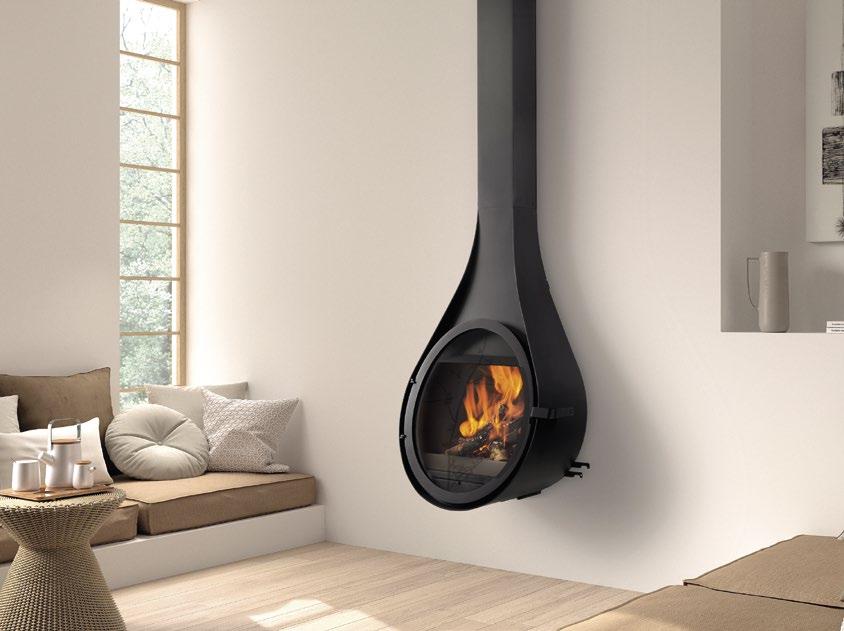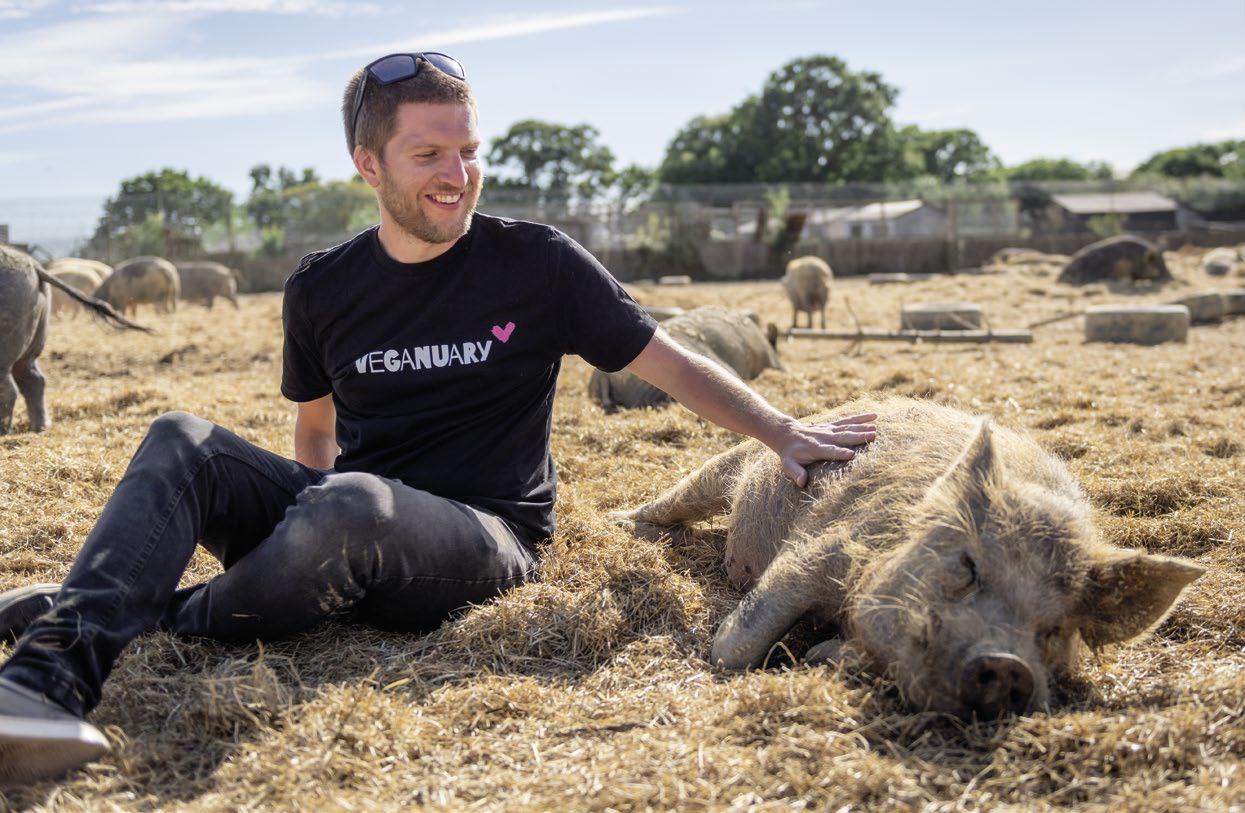
6 minute read
INTERIORS
www.redefiningwoodburners.com www.acrstoves.com

Woodburning Wins
With energy providers collapsing, spiralling wholesale prices forcing an increase in the energy price cap, and a greater awareness of the effects of energy consumption on climate change, now seems as good a time as any to reconsider the way in which we are heating our homes.
When compared to standard heating systems there are definitely good savings to be had from installing a wood burning, solid fuel stove. They can be 13% to 77% cheaper to run than conventional systems according to data from This Is Money and the Stove Industry Alliance.
However, with the cost of a stove ranging anywhere from £500 to £5000, added to the cost of professional installation (essential for safety), it’s worth carrying out your own review as to the savings you might hope to achieve.
The cost of the stove itself will be determined primarily by style and wattage but added features will also make a difference. A large stove with a big window or a slimline stove with an integrated log store will be more costly, as will a doublesided stove or one that can be swivelled to fit into a corner. You’ll need to decide which features are worth paying for and which are not.
Installation costs will be influenced by your house. You will have to pay more if your chimney requires relining or is particularly tall and needs external scaffolding. If you don’t already have a vent in your room then you’ll need to budget for that, as well as the subsequent making good. A vent is required to meet building regulations so unless you already have one, this isn’t a cost you can avoid.
The type of fuel you choose to burn will also have a significant impact on cost, as well as heat output and performance. You may be restricted by the type of fuel you can get access to, what space you have to store it and whether or not you live in a smoke control zone.
Information gathered by The Sun newspaper estimates that stove owners consume around 1 – 1.25 tonnes of wood per annum depending upon the type of wood that you choose to burn, the wattage and efficiency of your stove model, the number of hours you choose to run it, and the effectiveness of insulation within your home.
There are four different types of fuel available – seasoned logs, those that are freshly cut, wood pellets and briquettes (comprised of crushed paper or wood). Freshly cut logs are by far the cheapest to purchase but they will have a high moisture content, between 50% and 60%. Burning moist logs will cause a buildup of tar in the chimney and increase harmful air pollution, so is to be avoided. Instead, stockpile wood in a covered area outside your home and allow to dry for one to two years before burning. This will, without doubt, be the most cost-effective way to supply your stove with fuel in the years ahead.

Rosie Kinsella Interior Designer 01604 751262 www.millsandkinsella.com
The annual cost of maintaining a wood burning stove will be limited to a once or twice-yearly chimney sweep. This keeps your stove in good working order and ensures it doesn’t produce potentially harmful pollutants or become a fire risk.
Around a million households across the United Kingdom choose to warm their homes using a log burner but it’s important to point out that a log burner won’t heat your entire home, only the room it’s located in and potentially, the adjacent rooms surrounding it, so you’ll still have to have the heating on in other rooms.
Checkatrade suggests the average cost to install a log burner is around £2,000 and that’s on top of the stove itself. Installation can involve a new fireplace and hearth, and costs could be even higher if you don’t already have a chimney. If the environment and reducing emissions is an important factor in your decision-making, then a new certification scheme launched in August 2020 is available to guide you. www.clearskiesmark.org helps you identify the most eco-friendly log burners

by confirming that they meet or exceed the forthcoming Ecodesign Regulations. Clear Skies state that the certification reflects the appliance’s independent test results for efficiency and four different types of emissions and gives the consumer confidence that they are choosing a low emission and low carbon heating solution for their home.
The Energy Saving Trust - a social enterprise organisation - has previously claimed that installing a wood-burning stove reduces a household’s reliance on other forms of heating by 10 per cent. This figure rises to 20% for larger appliances. And although the initial cost of purchase and installation of a wood burning stove means that you won’t save money in the short term, over a longer period it will save you money by reducing your fuel costs, so much so that the initial cost of the stove can be recuperated. Wood burning stoves are a low-carbon alternative to heating your home using fossil fuels. Whilst not completely environmentally clean, they do offer an acceptable interim solution for those needing to save money on their bills whilst wishing to be more environmentally conscientious.

www.wallsandfloors.co.uk
Character animals in watercolours
Despite Bev Davies possessing formal art training, it wasn’t until 2020 and the twist of fate that happened to be the Covid-19 pandemic which encouraged her to start creating her own art prints. Almost two years on and her charming animal portraits, composed of watercolours, pen and ink, are now collected in homes around the UK, bringing the joys of the wilderness indoors.
Her limited edition prints are full of life and character, incorporating natural colourings to depict hares, frogs and a whole host of other animal friends. Despite the pandemic’s challenges and hardships, this one element of it happens to have been a stroke of luck for Bev!
Having been advised to shield in February 2020 due to the onset of the Covid-19 pandemic, and the commencement of an immunosuppressive biological treatment for ulcerative colitis, Bev found herself stuck at home with plenty of free time ahead of her. She had her roots in the art world, with experience studying at Wrexham Art
College and a BA in 3D glass design, and up until this point, she had been running a glass studio business with her husband, a fellow glass artist. This career had brought her much enjoyment and success, but she had always had a desire to pursue painting, putting it off as a result of a lack of confidence and opportunity. However, with the wake of the pandemic and an indefinite future of shielding lying ahead, Bev decided now was the perfect time to make the leap and take a chance on her passion.
She initially began by producing a series solely for her own entertainment, in which she conveyed her feelings of loneliness and isolation through an alter-ego – which just so happened to be a goldfish! Harnessing a style that embraces dynamism and fluidity, she continued to produce portraits of animals from her Shropshire home; a subject matter that perhaps initially appealed as a way for her to vicariously experience their ability to roam freely, while she was unable to. Upon discussing her choice of medium, she notes, “I love the transparency of watercolour, and the use of a pen allows me to express extra movement and feeling.”
Now, having gained great popularity in the contemporary art scene, Bev’s independent art career is really taking off, and her range of limited edition prints are beloved by many on the walls of their homes. She describes her style as still-emerging and evolving, which makes the release of new artwork from Bev an even more exciting experience!



Gemma Davey Gallery Correspondent www.therosegallery.co.uk










